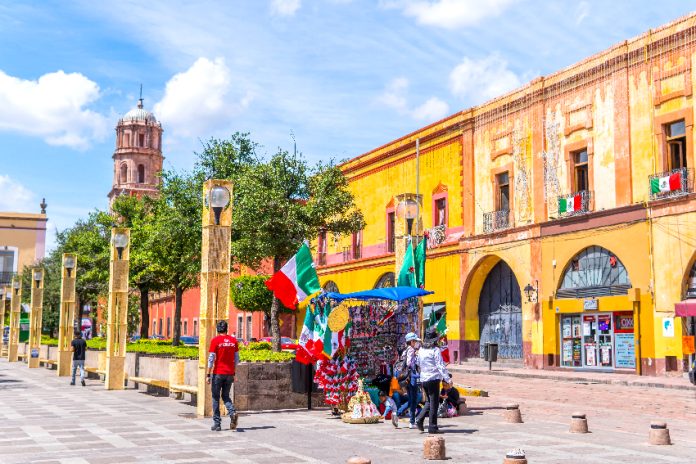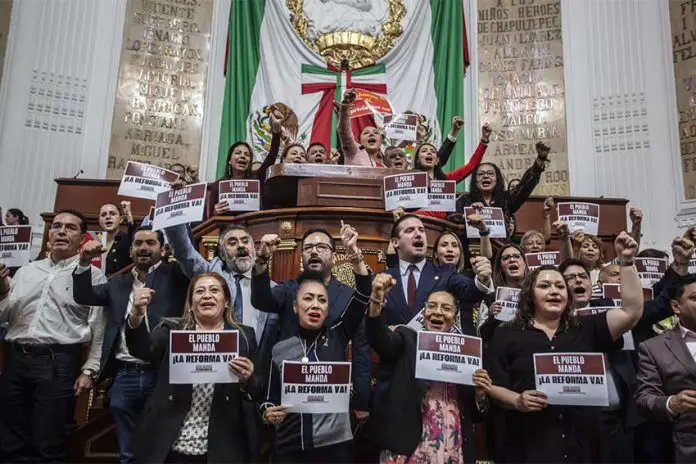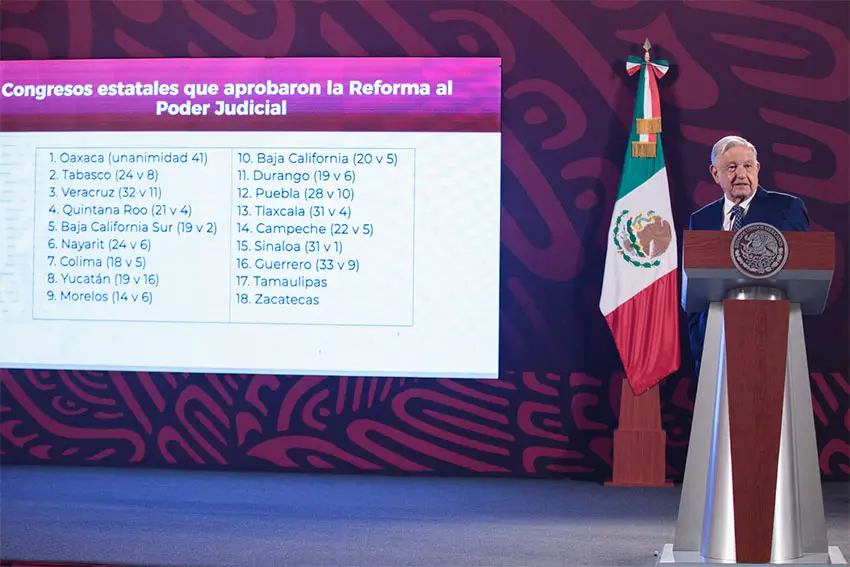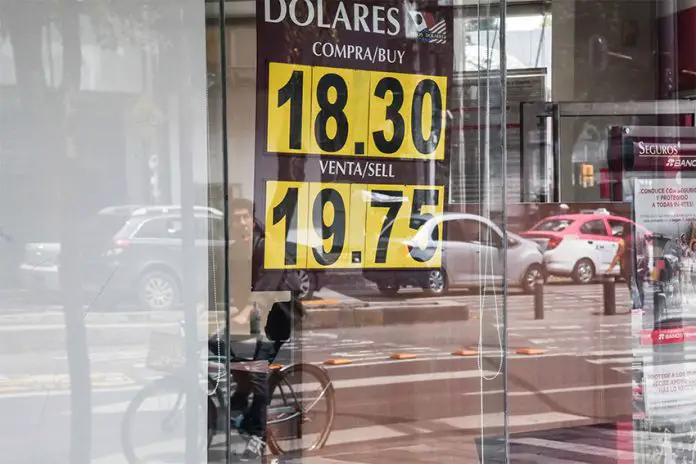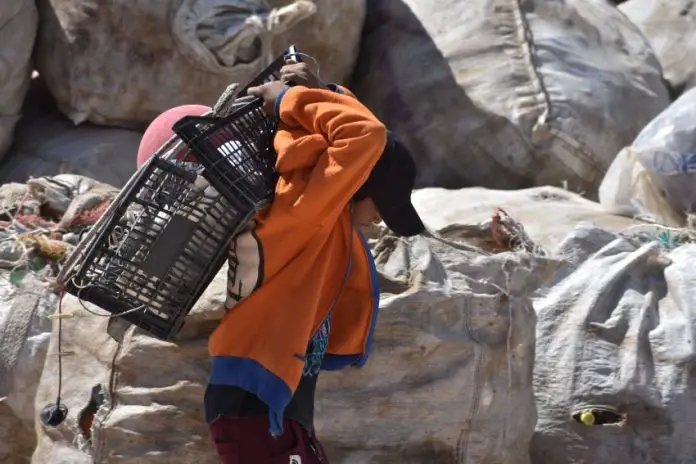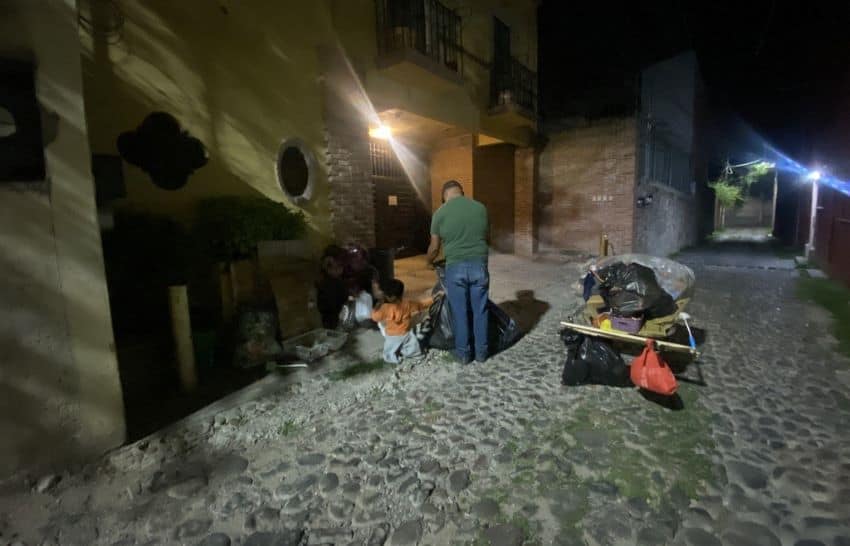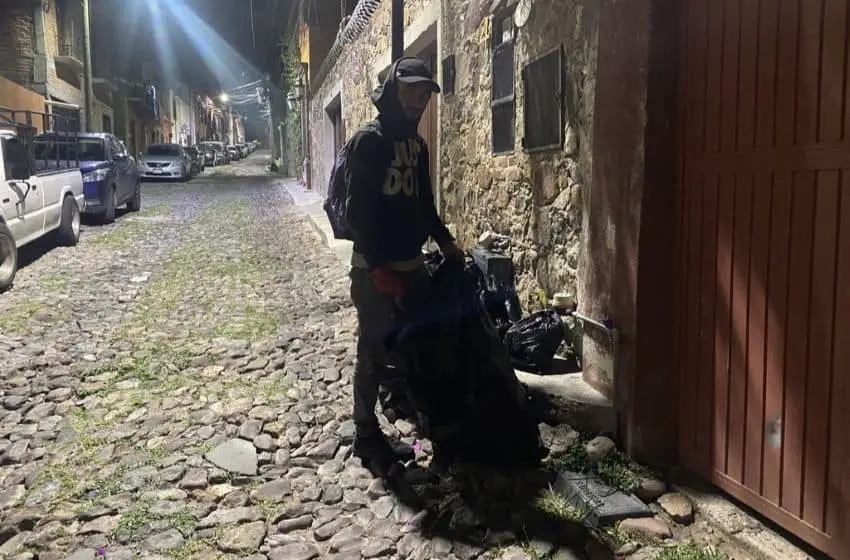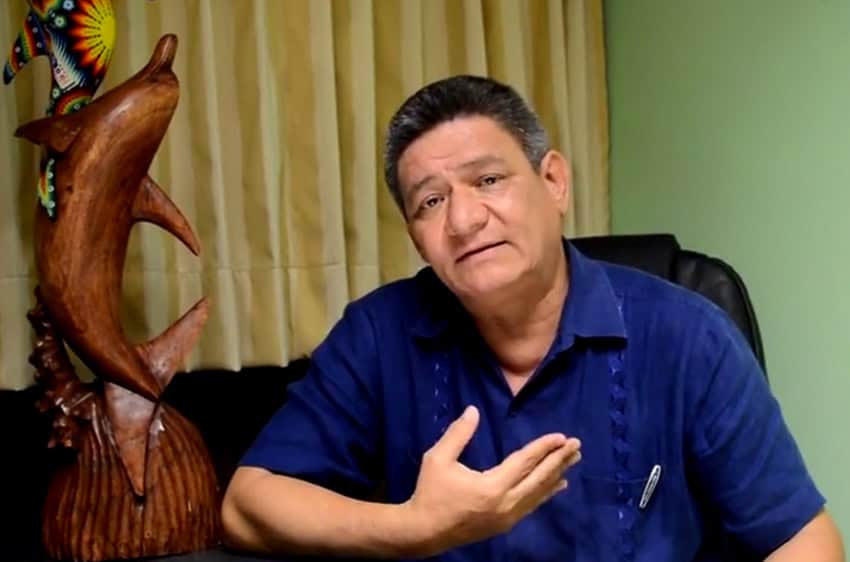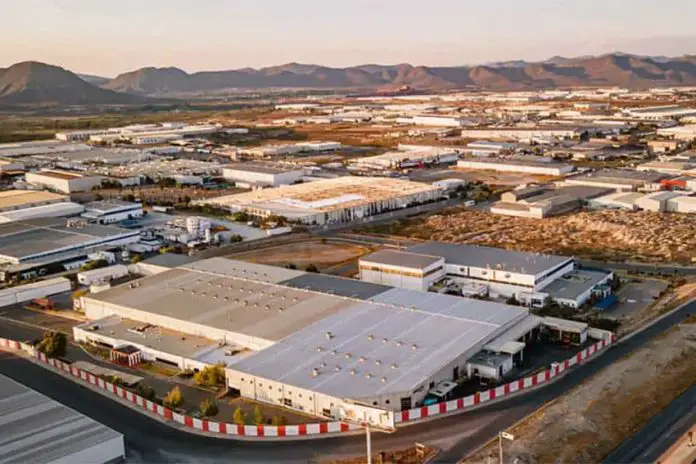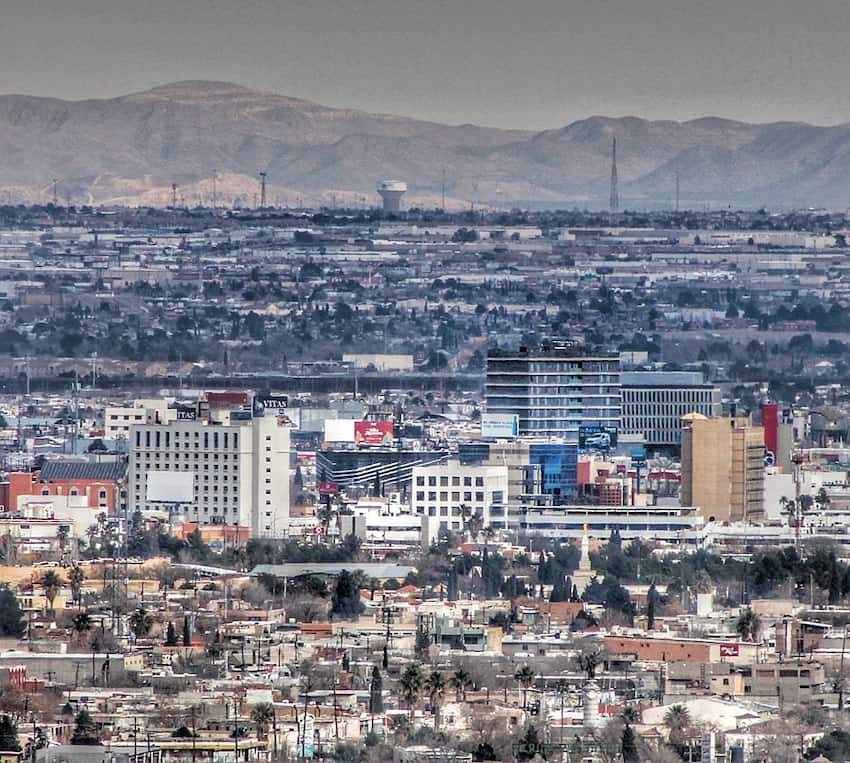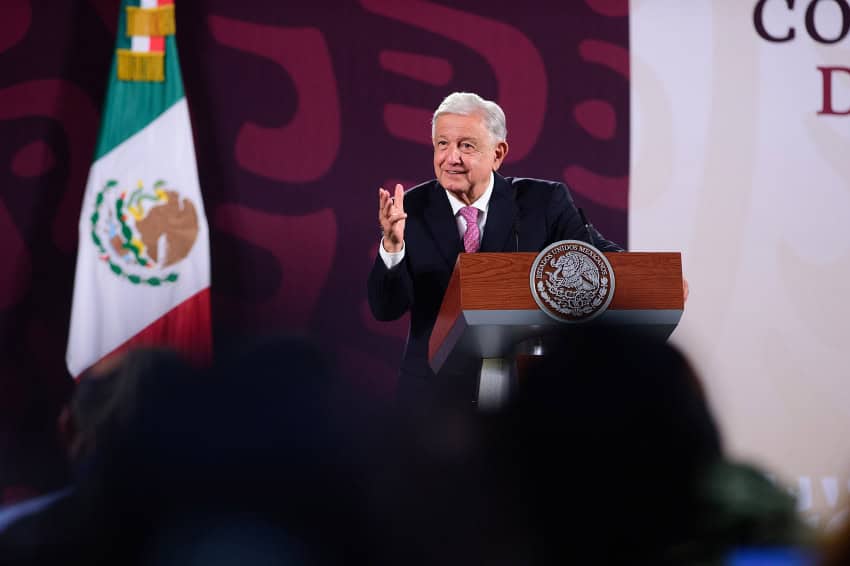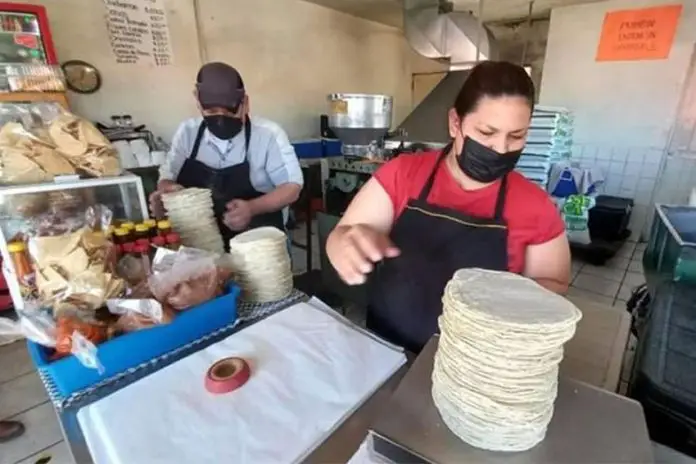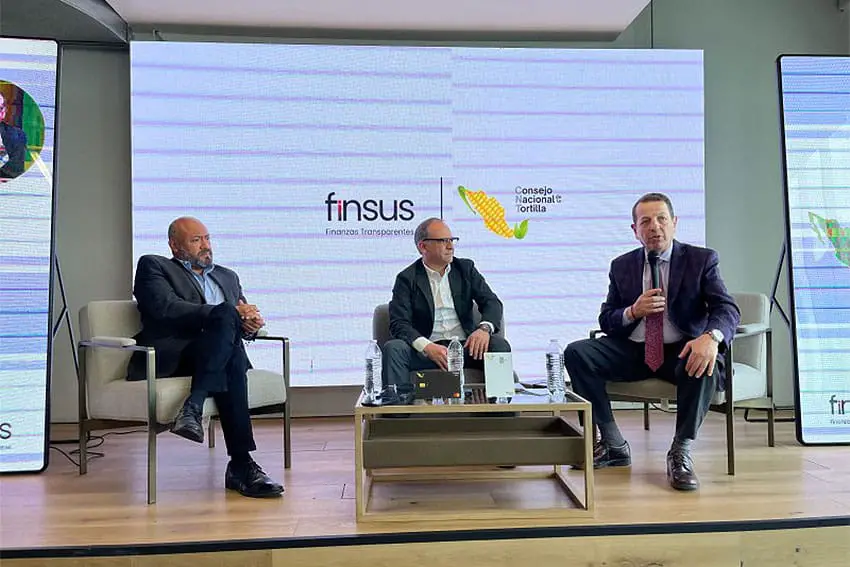In a move akin to canceling Christmas, the state of Sinaloa has called off its “Grito de Independencia” festivities in Culiacán scheduled for Sunday night due to a cartel turf war causing a wave of violence in and around the capital city.
The popular activities associated with the night of Sept. 15 in many Mexican cities — a reenactment of the 1810 “Cry of Independence” in a formal civic ceremony followed by a free downtown concert — have been suspended, Governor Rubén Rocha Moya said Thursday.
“There will be no celebration, neither public nor private,” Rocha announced. “We will do the Grito basically in protocol, here at the government palace, with the presence of the honor guard, the military band and my cabinet exclusively, without guests.”
Classes at all educational levels have also been canceled for the remainder of the week. The cancellations apply to the municipality of Culiacán, where the state capital is located. They also apply to the municipalities of Elota, Cosalá and San Ignacio.
Rocha said the decision was made to protect the population’s safety in the wake of dangerous shootouts, blockades and intentionally set fires.
The free 7 p.m. concert was scheduled to be headlined by nine-time Grammy and Latin Grammy award winner Pepe Aguilar — a Mexican fan favorite in the mariachi, ranchera and norteño genres. He was to perform along with his daughter Ángela and son Leonardo, themselves recording stars with several Grammy and Latin Grammy nominations between them.
A las y los sinaloenses pic.twitter.com/qpYoSp0gaz
— Rubén Rocha Moya (@rochamoya_) September 12, 2024
Sinaloa Governor Rubén Rocha Moya announced in a video published on his Twitter account Thursday that the traditional Sept. 15 Independence Day festivities would be canceled this year in order to keep the public safe.
However, since Monday — exactly one week before Independence Day on Sept. 16 — Culiacán has been engulfed in violence stemming from a turf war between the “Los Mayos” and “Los Chapitos” factions of the Sinaloa Cartel.
The violence is occurring a month and half after the much-ballyhooed arrest of Ismael “El Mayo” Zambada on U.S. soil.
The alleged Los Mayos leader was reportedly abducted and surreptitiously flown from Sinaloa to an airport outside El Paso, Texas, in an operation said to be spearheaded by Joaquín Guzmán López — the son of former drug lord and current U.S. convict Joaquín “El Chapo” Guzmán.
In response, a son of El Mayo reportedly gave the order to take Culiacán and “finish off Los Chapitos,” the newspaper Mileno wrote.
Los Chapitos is the Sinaloa Cartel faction reportedly run by the sons of the imprisoned El Chapo. Two of those sons are currently in U.S. custody: Ovidio Guzmán and the aforementioned Joaquín Guzmán López
From Monday through Wednesday, the violence between the two criminal groups resulted in nine deaths, 14 reports of kidnapping and 16 vehicle theft reports, according to a report issued Wednesday night by the state Attorney General’s Office (FGE Sinaloa).
“Shootings and blockades shake Culiacán,” blared a headline in Milenio. Gunfire, burned vehicles and other blazes have been reported in several areas, and there also have been reports of civilians taking up arms.
3 Dias sin poder salir tranquilos, sigue el robo y quema de automóviles y camiones de transporte, y el pndejo de Rocha moya y su secretario de seguridad dicen que esta tranquilo.
Tantita madre deberían tener.
Sera que el hoy de Culiacan es el futuro de México? pic.twitter.com/RHVb6Doq6D— Jav´s ⚔️🐺⚔️ #Javs® Tuneo memes! 𝕏 🧢💧 (@fj_grija) September 11, 2024
Squadrons of armed civilians have been reported — and recorded — fighting and patrolling in and around Culiacán this week.
Shortly after the July 25 arrest of Zambada and Guzmán López in the United States, approximately 400 members of the armed forces were sent to Culiacán to keep the peace.
They are now part of an inter-institutional operation of federal, state and municipal forces trying to keep the population safe while the criminal groups battle.
This operation “has been active in deterring some violent actions, but above all, [it is] reducing to a minimum the risks to the population from the actions of these criminal groups,” Governor Rocha contended.
Many Culiacán restaurants and businesses — including Pizza Hut, McDonald’s and the Plaza Forum shopping mall — shut down on Wednesday.
One report said restaurants in the exclusive area of Tres Ríos were almost entirely shuttered and that those still open had few if any customers. (Tres Ríos is in a section of north Culiacán considered a Los Chapitos stronghold.)
In some areas, public transportation halted on Wednesday.
“Residents expect the worst, that hell will break loose at any moment,” Milenio wrote.
However, the newspaper also quoted an unidentified woman as saying, “Yes, things are happening, not specifically here in Culiacán, but in the surrounding areas.”
But, she added, many “people are afraid after what happened [in 2019] with the ‘Culiacanazo.’”
That’s when Culiacán exploded in violence following the Mexican government’s brief capture of Ovidio Guzmán. Authorities ultimately released him in an attempt to de-escalate the chaos and prevent further bloodshed, a decision President López Obrador took responsibility for afterward, saying he personally approved the recommendation to release Guzmán by his security cabinet.
Noting that citizens are once again threatened by danger, 14 former presidents of Culiacán’s Chamber of Commerce, Services and Tourism (Canaco) issued a joint statement Thursday demanding that the federal, state and municipal governments guarantee residents’ safety.
“In light of the unfortunate events of insecurity that have occurred in the last three days, [we] express our deep concern and dismay,” the statement read. “Businessmen, workers and citizens in general are experiencing moments of uncertainty and fear for our safety, which has resulted in an evident paralysis of the local economy.
“It is imperative that immediate and effective measures be taken to restore order and peace in our city,” the statement added. “We cannot allow violence to continue to endanger lives, jobs and the economic future of our community.”

